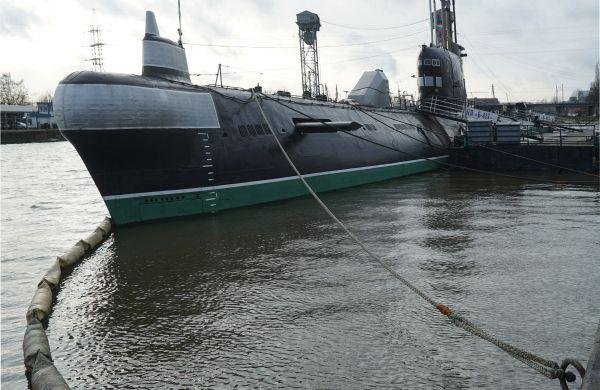On this day in 1986, a Soviet nuclear submarine caught fire and sank in the waters off Bermuda.
The submarine's thermonuclear warheads and nuclear reactors sank to the bottom of the sea with the submarine.
While most of the warheads and reactors are still there, some of the warheads - and the missiles that contained them - were determined to be missing two years later.
The accident, which occurred 36 years ago in the mid-Atlantic, was one of the most dangerous maritime incidents of the Cold War. The Soviet Navy submarine K-219 caught fire and eventually sank. To add insult to injury, the submarine's thermonuclear warhead and nuclear reactor were not recovered. If they are not retrieved in the future, there is the potential for an environmental disaster.
Sinking in the waters off Bermuda
On October 3, 1986, K-219 was cruising approximately 600 miles northeast of Bermuda Island. The ballistic missile submarine was carrying missiles with nuclear warheads designed to bring the United States within range as part of the Soviet nuclear deterrent. One month after leaving the Soviet Northern Fleet's Gagievo submarine base, K-219 is conducting launch exercises in preparation for a possible future launch of a missile with a nuclear warhead off the eastern seaboard of the United States.
At 420 feet long (about 128 meters) and 38 feet wide, the Soviet submarine is a slender, nuclear-armed killer. k-219 has a maximum dive depth of 1,029 feet and a crew of about 120. Powered by two 90-megawatt OK-700 nuclear reactors, it can travel at 27 knots underwater and is not limited in its range except for food and water supplies.
The K-219 is heavily armed: in addition to six 533 mm torpedo tubes and 18 torpedoes, the submarine carries 16 R-27U submarine-launched ballistic missiles. Each R-27U has a range of 1,900 miles. Its accuracy, measured in circular probability error (CEP), is 1.2 miles. This relatively poor accuracy needs to be compensated for by a warhead powerful enough to destroy civilization; thus, each missile carries one thermonuclear warhead with an explosive yield of 1 million tons or three nuclear warheads with an explosive yield of 200,000 tons. To illustrate the destructive firepower of the K-219, one need only know that the atomic bomb dropped on Hiroshima, Japan, had an explosive yield of only 16,000 to 17,000 tons.
Long-term threat to marine ecology
On that day in 1986, K-219 was diving in the Sargasso Sea when a missile fuel leak caused an explosion. After dealing with the explosion and fire, the crew was also forced to manually shut down the reactor, a standard procedure for nuclear-powered ships to prevent fire damage to the reactor. The accident killed four crew members (one of whom died while shutting down the nuclear reactor) and injured more, but the number is unknown.
People worked for three days to save the submarine and finally decided to have it towed by the Soviet merchant ship Red Guard City. The towing cable suddenly snapped and K-219 sank to a depth of 18,000 feet. In high-level conversations, Soviet officials said they believed the hull would implode 2,296 feet below the surface.
The accident resulted in the destruction of at least 16 thermonuclear warheads as well as two nuclear reactors. Admiral Vladimir Chernavin, then commander of the Soviet Navy, explained to Soviet leadership that the potent explosives and plutonium on each nuclear warhead were contained in metal spheres that would gradually corrode in salt water, and that "the corrosion process opens up, which would lead to the spread of radioactivity." However, he said, the radioactivity is limited and cannot reach the surface of the water. Chernavin also explained that the two nuclear reactors would also corrode and spill radioactive material, but that "the process is very slow and takes decades."
Releasing toxic plutonium into the ocean would cause an ecological disaster, threatening the surrounding environment, fish stocks, and even nearby shipping lanes. Plutonium decays very slowly, with a half-life of 24,000 years, which means that after 24,000 years, half of the material released into the ocean will still be there, continuing to pollute the environment.
Thermonuclear warheads strangely disappear
The U.S. government soon realized the disaster of K-219 and sent P-3C Orion maritime patrol planes to monitor the submarine rescue operation and even provide assistance. But the Soviet leadership was more concerned about the possibility of the U.S. recovering the submarine and holding its secrets. Mikhail Gorbachev, the last leader of the Soviet Union, twice mentioned the possibility of an American salvage. Gorbachev and the Politburo were apparently aware of the "Azores Project" - the CIA's 1974 secret salvage of the Soviet K-129 missile submarine in the waters off Hawaii.
Gorbachev's fears that the Americans might have stolen parts from the submarine and from the missiles proved correct. Stephen Schwartz, a guest researcher for the Bulletin of the Atomic Scientists, said, "Few people know that two years later a Soviet research vessel discovered that after K-219 had sunk to a depth of 18,000 feet, several ballistic missiles on the submarine -- along with their thermonuclear warheads -- had somehow been removed. Did the United States secretly salvage not one, but two Soviet missile submarines?"
The K-219 incident illustrates not only the dangers of nuclear weapons, but also the dangers of careless use of nuclear weapons. Someday someone will have to dive 18,000 feet below the surface of the Atlantic Ocean to retrieve the reactors and warheads before they release toxic materials from corrosion.
If that sounds mind-numbing, imagine facing worse problems than that over a 24,000-year period - all because of the Cold War.
